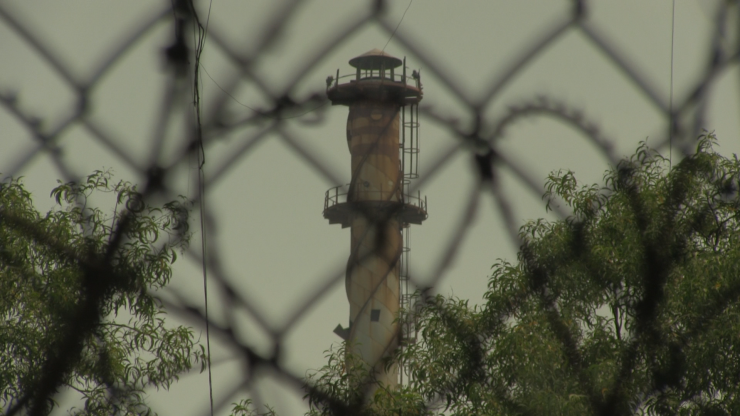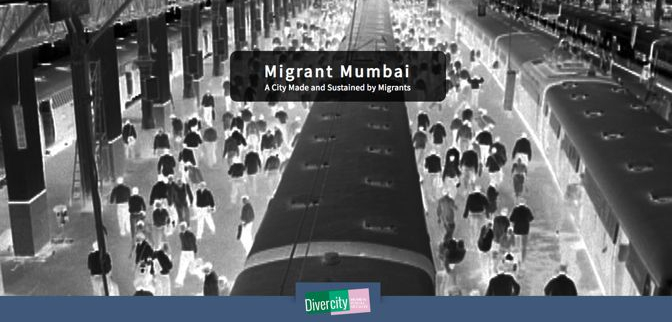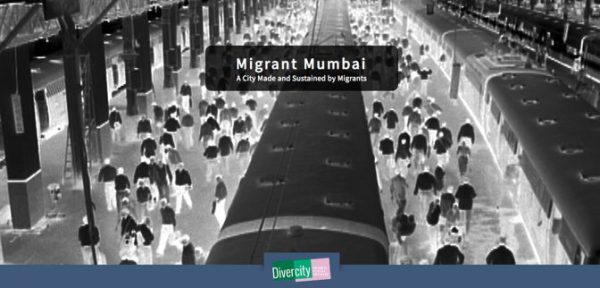
I carried a tiffin box
to the mill since childhood
I was cast the way
a smith forges a hammer.
[…]
It is people like me
builders of your grand edifice
Who add to your glory
day after day, O City.
— Narayan Surve, Mumbai1
The Migrant in the Exclusionary City
In its avatar of the global city, Bombay/Mumbai rests on a series of erasures and exclusions. From the rewriting of events like the 1992 violence to the reconfiguring of spaces such as the mill areas or Girangaon, both history and geography are being redeployed in the service of a homogenised, sanitised imagination of the city. The DiverCity Web Archive, created within the School of Media and Cultural Studies, Tata Institute of Social Sciences, seeks to generate and draw on a range of resources— print, audio, visual and documentary — to explore and evoke alternative experiences and narratives of the city.
The creation of the archive began in 2012, with the Remembering 1992 archive which sought to resist the erasure of the Mumbai violence of December 1992 and January 1993 where over 900 lives were lost. Subsequently, every year the School has been adding an archive, the backbone of which is the series of films that the students of the MA in Media and Cultural Studies produce as part of a third semester course in documentary filmmaking. Over the years, the themes addressed include the history of the Mumbai cotton mills, caste in the city, the question of how the city treats its waste and waste workers, the right to Mumbai streets and the theme of migrants and their rights to the city.
Mumbai, originally a set of seven islands inhabited by fishing communities, has a long history of migration, dating back to the 14th century, when Arab traders arrived at its shores. As it developed into a colonial port and trading city under the British and later into a centre for manufacture, Mumbai has always been a city of migrants, built on their labour, their enterprise, their sweat and blood. Its transformation from a set of islands with fishing villages to a bustling metropolis was made possible only through the work of the many migrants from the hinterland, who worked in the dockyards, the cotton mills, the railways, the construction works and the countless manufacturing industries that gradually filled up the city.
And yet, the city has always treated its subaltern workforce, particularly those working in the informal sector, in a cavalier manner. It has failed to provide basic necessities such as adequate shelter, water and sanitation to these workers. Some migrants are deemed citizens, assimilated into the city, granted access to shelter and amenities. Others remain migrants forever, denied their rights to the city, generation after generation. Despite their precarity in the scheme of the city, their contribution is immense. They form the backbone of the informal sector: construction workers, hawkers, domestic workers, waste recyclers, taxi drivers, contract workers in small-scale industries and many others. Their contribution to the city is mostly unrecognised and they are often seen as a drain on the city. The Migrant Mumbai website explores the lifeworlds of these “other” migrants.
Continuing Struggles
The two films showcased here focus on the emblematic figure of the migrant and bring out current localised struggles by migrants who have been “dislocated and rehabilitated” multiple times by the state.
Ghutan (Suffocation, 2018, directed by Chinar Mehta, Harikrishnan HG, Pallavi Khare, and Yogiraj Bhende, a part of the series of films entitled Migrant Mumbai) begins by introducing Anita Dhole, a resident at the Mahul slum rehabilitation buildings and an activist associated with Medha Patkar’s Ghar Bachao Ghar Banao movement, a campaign to ensure proper housing and rehabilitation to the displaced poor. Ms. Dhole offers a brief overview of the rehabilitation project and some of the health concerns faced by its residents.
As the film progresses, more residents are introduced and they reveal the hazards they face and the afflictions they have developed as a result of being relocated to a toxic dump. Poor water and air quality, caused by close proximity to the refineries and chemical industries, have led to severe illnesses among residents, including tuberculosis, pneumonia, and even cancer. These anxieties were heightened by the explosion at the BPCL refinery in August 2018, which left 43 people injured in the refinery. While the government has currently stopped relocating residents to Mahul, those who already live here continue to struggle to survive. Since early 2017, a group led by Ms.Dhole began a campaign to be relocated to areas with better living conditions. This campaign, which initially began with 30 residents has now become a part of activist Medha Patkar’s nationwide Ghar Bachao Ghar Banao movement.
Zindabad (2019, directed by Ajay Kumar Shukla, Apoorva Jaiswal, Kavya Karnatac, Lavanya Rakesh and Srishti Kapil, a part of a series of films entitled Transforming Our Lives) takes off where Ghutan ends. Zindabad traces the struggles of the Jeevan Bachao Andolan, an offshoot of Ghar Bachao Ghar Banao movement, again through the eyes of Anita Dhole, one of the leading activists in the movement. As mentioned earlier, after their houses in Vidya Vihar were demolished by the BMC, Anita along with other residents was rehabilitated to Mahul, where Ghutan is set.
Located in close proximity to a large complex of chemical factories, residents of Mahul continue to face serious health concerns resulting in over 88 deaths in the past 5 years. The courts have ordered the state to provide alternate accommodation, declaring the precincts as unfit for human habitation. Protesting against the violation of their basic rights, Anita has been living on the footpath for over a year now, opposite the original site from where they were dislocated. The film explores the multiple strugglesof the residents of Mahul and enquires into women’s participation as an essential part of the movement.
Both these films in particular,and the web archives in general, point to the precarity of migrants within the city and the exclusionary and exploitative attitude of the state and municipal authorities towards them. Both focus on the ways in which the migrants resist the injustice done to them by a city that depends on their labour but refuses to recognise their rights to the city.
1. Translated by Mangesh Kulkarni, Jatin Wagle and Abhay Sardesai from Maze Vidyapeeth by Narayan Surve, Popular Prakashan, 1966






